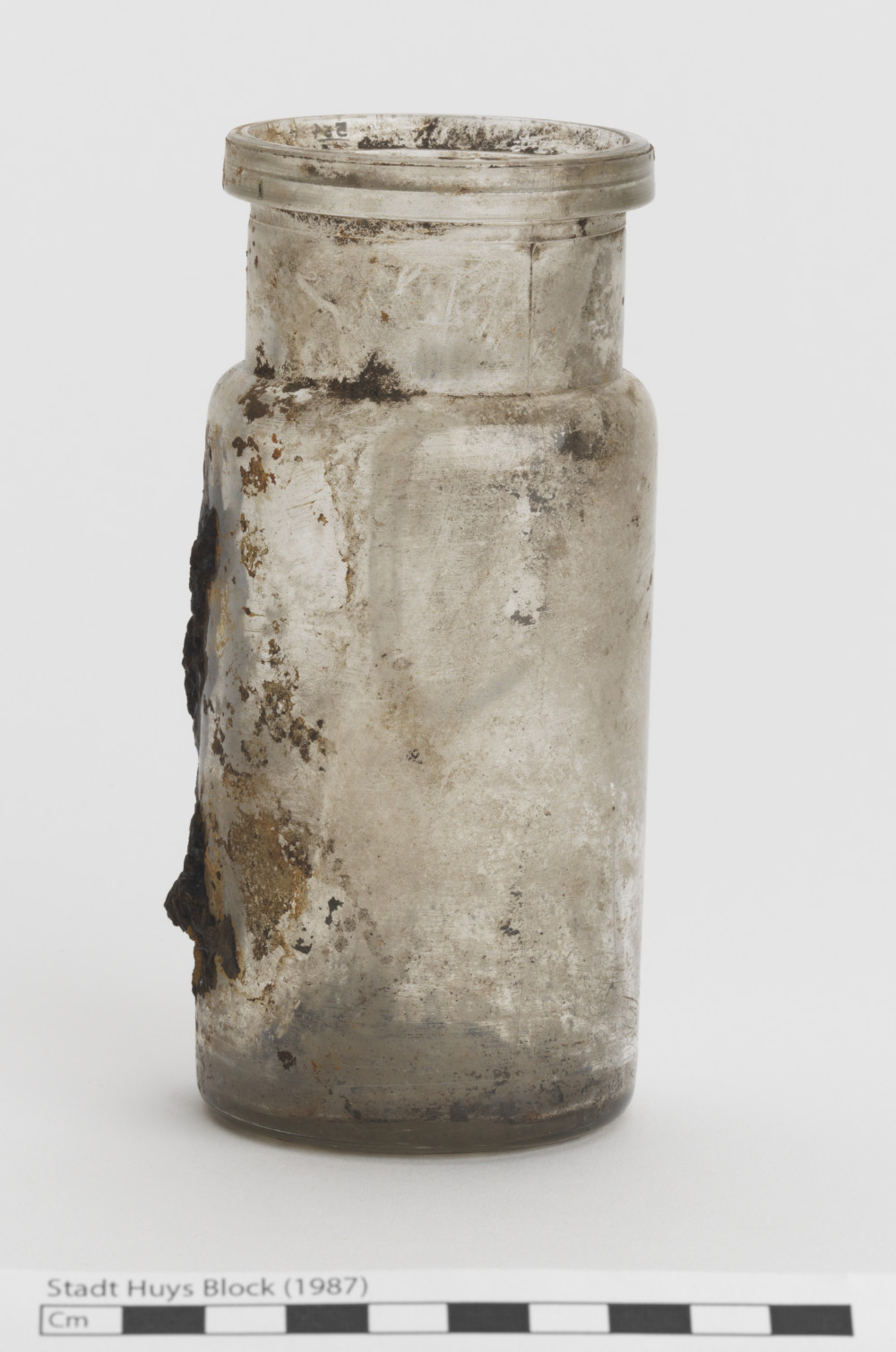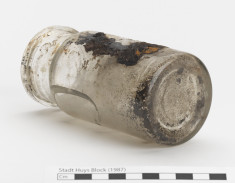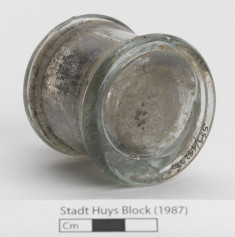Introduction: People have occupied and modified Lot 16 – a small parcel of land that once fronted Pearl Street – for a long time. However, only two buildings are on record as having been built on the Lot in the past 400 years. The earliest Colonial building was constructed sometime between 1660-1672 and the latest historic building in 1870. In addition, walls, outbuildings, and other structures were installed over the life of the Lot. Each building episode leaves below-ground traces for archaeologists to find. The history of a site can then be pieced together by "reading" the layers beneath the earth's surface (also known as stratigraphy) and analyzing its artifacts. One of the main tasks for the archaeologists on the Stadt Huys project was to determine what, if any, historical remains still existed beneath the modern ground surface.
Rationale: Lot 16 is a small area to the north of Lots 8 and 9. The lot was mostly residential from 1660 until 1835. The last structure was built on the lot in ca. 1870.
Results: Archaeologists discovered and then removed a 2- to 3-inch-thick cement floor in Test Cut I at a depth of 18- to 22-inches below excavation surface. The cement floor is thought to be part of the 1870 building. Test Cuts Z and Z1 were placed adjacent to Test Cut I to assess the stratigraphy of the area beneath the floor. This level contains 19th-century fill that was used either to level out the area and/or to help manage excess water prior to the construction of the cement floor.
Lot 16, Test Cut Z1, Stratum III, Level A
-
Collection method
Hand Pick, Trowel, 33.3% Screen (1/4-inch mesh). Arbitrary 4-inch Level.
-
Soil description
Black Sooty Sandy Silt with Gray Mottles
-
Munsell
5YR 2.5/1








